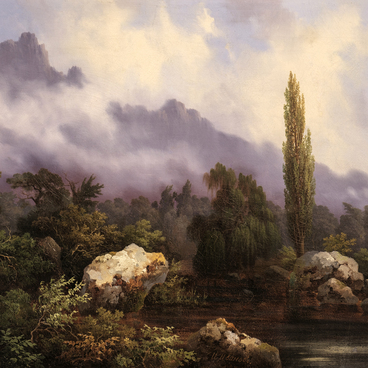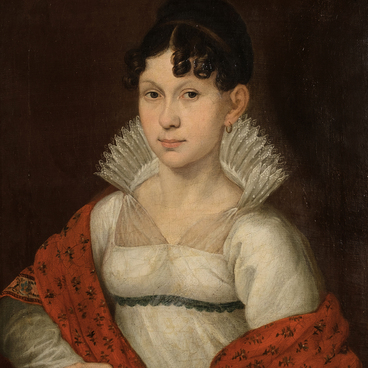This horizontal canvas features an autumn forest landscape. The foreground with its withered grass is in the shadow, while the background is illuminated by the sun. Among the yellowing trees on the right, against a blue sky, the artist depicted the white tent roof of a church bell tower and an outbuilding. The painting “Autumn”, created by Pyotr Petrovichev-Kuzhmichyov in 1904, draws the viewer’s attention with its unique technique. The image is formed by thick, impasto brushstrokes of oil paint. They emphasize the three-dimensional nature of the landscape, making it more textured and tangible. It feels as if one can touch the yellowing birch leaves and the withered grass or breathe in the crisp autumn air.
Pyotr Petrovichev-Kuzhmichyov achieved an unusual effect by using brushstrokes that can easily be separated from each other. At first glance, it is difficult to distinguish what is depicted on the canvas. Everything seems to blend together, and the only things that can be isolated are the paint colors and brushstrokes. However, by moving even slightly away from the painting, one can see a white stone church with a blue dome and a golden cross, a church bell tower, an outbuilding, and some free-standing trees. Despite the impressionistic techniques, the landscape remains easy to make out.
Realism and liveliness are achieved by the choice of colors. Pyotr Petrovichev-Kuzhmichyov used homemade mineral paints which allowed him to create shades close to real nature. His use of mineral paints may have been influenced by his early artistic training at the Rostov Museum of Church Antiquities.
The artist was born into a poor peasant family in the village of Vysokovo near Rostov Veliky. His father noticed that his son liked drawing and sent him to a “carving school” at the Rostov Museum where he began to hone his artistic skills. There, he met the painter Vasily Vereshchagin who advised the young artist to continue his studies in Moscow.
At the School of Painting, Sculpture and
Architecture in Moscow, the artist studied under the guidance of Valentin Serov
and Isaac Levitan. According to Petrovichev-Kuzmichev, Levitan taught him how
to “paint in a Russian way”, meaning in a direct and simple manner. Later,
Levitan described his student’s works as “nature itself”.


